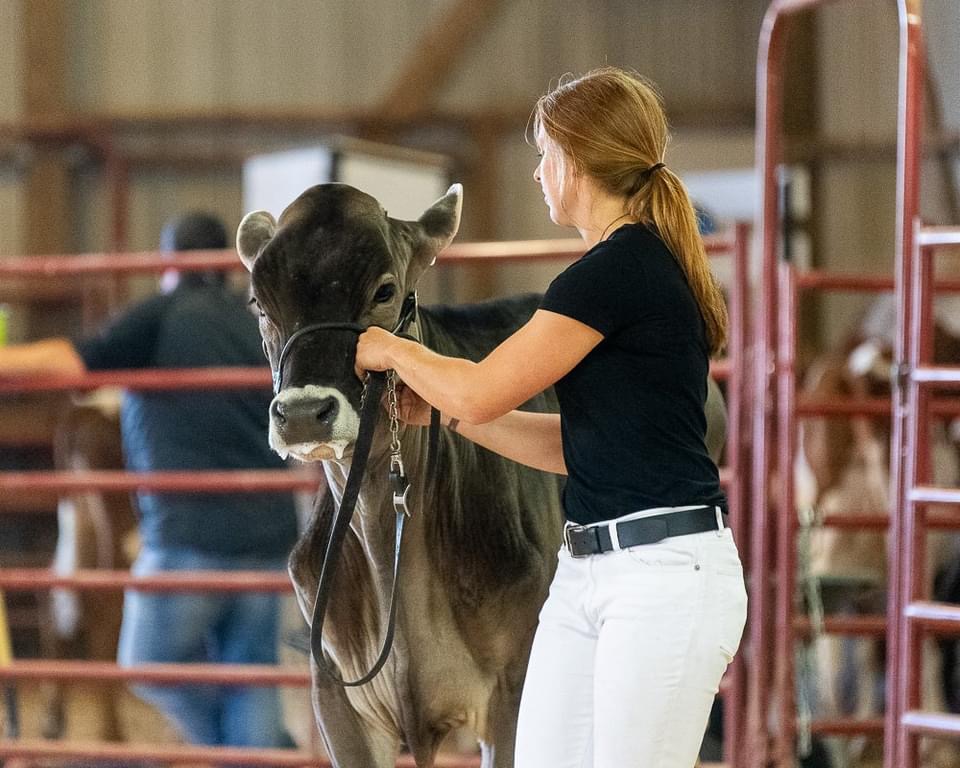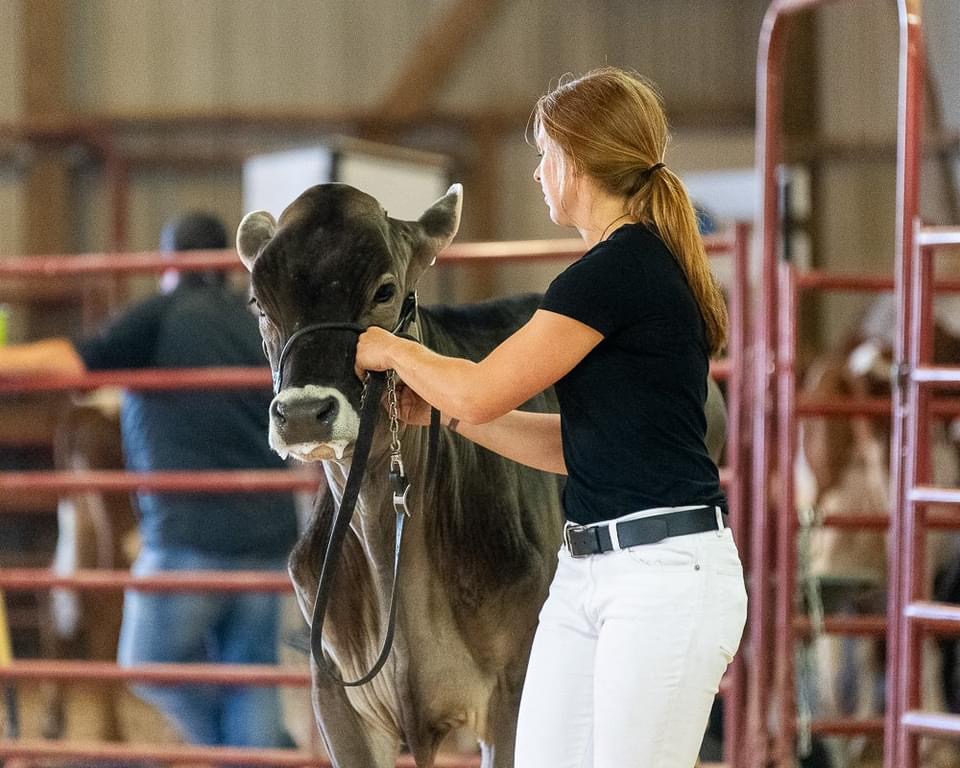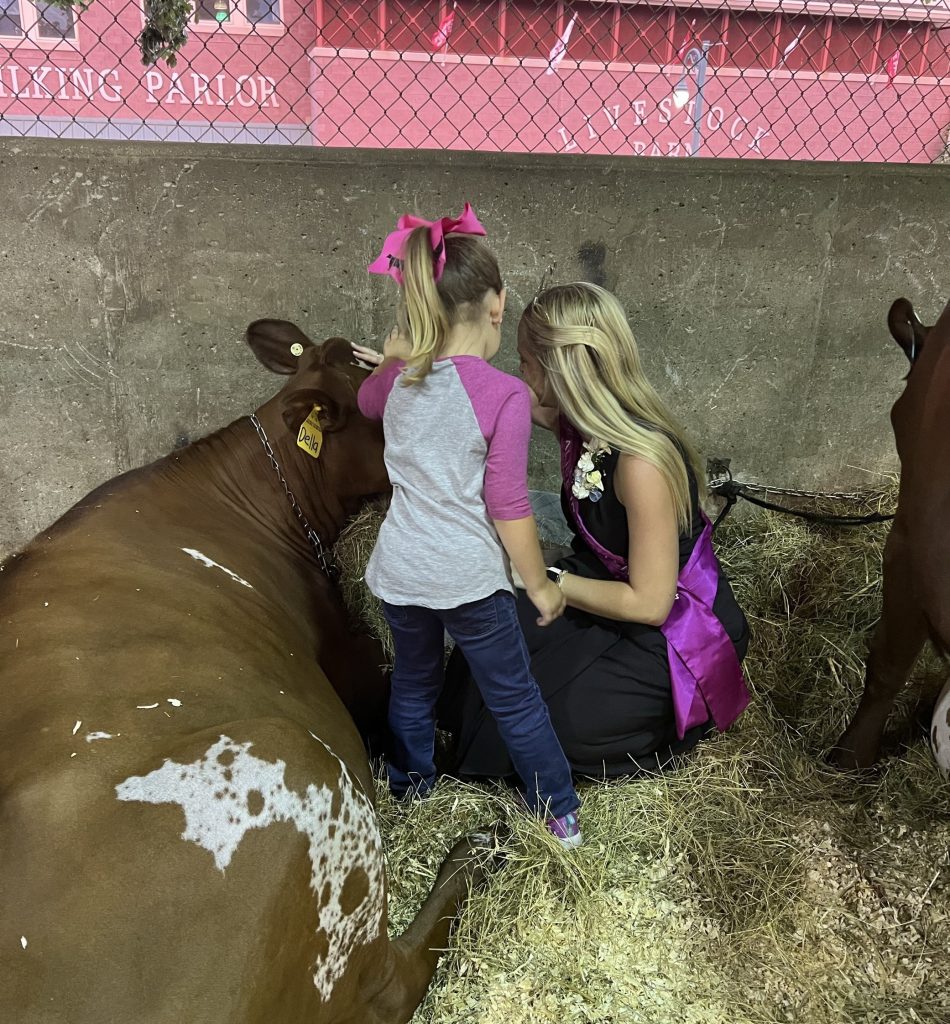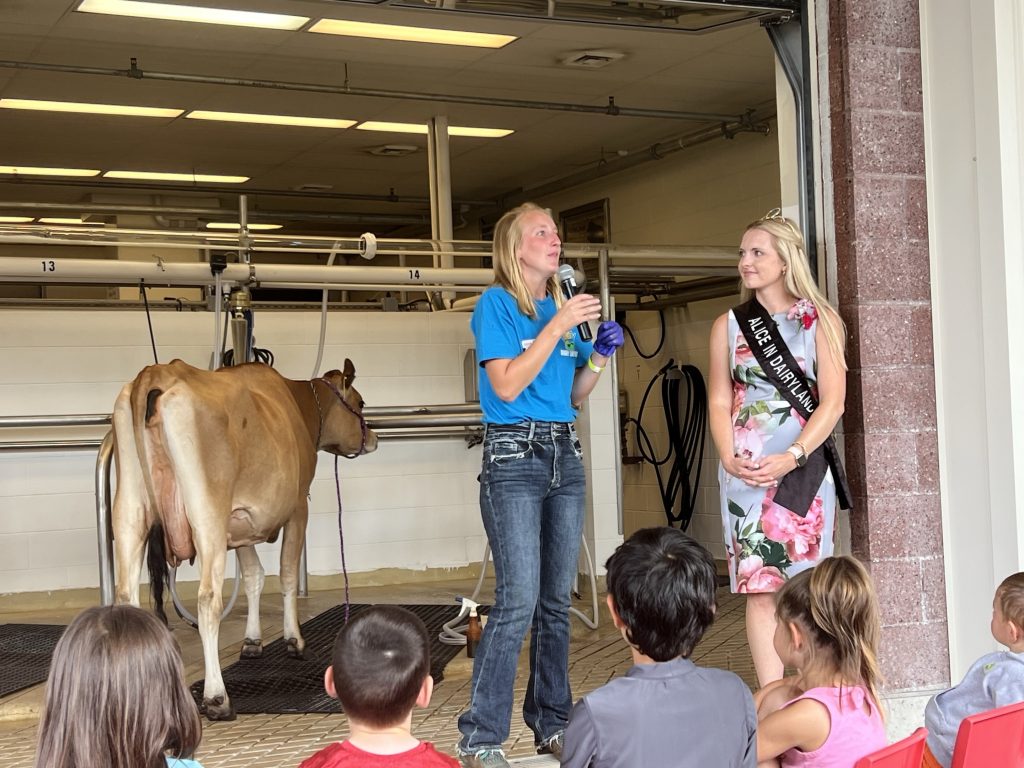
Farmers, veterinarians, animal health officials, and the animal agriculture community at large have become all too familiar with Highly Pathogenic Avian Influenza (HPAI), H5N1, or “the bird flu” recently. For poultry farmers, HPAI has been an unfortunate reality for over two years. However, more attention turned towards the outbreak in the last few months as this virus strain appeared in dairy cattle and other mammals. This has caused a lot of uncertainty in the dairy community, especially as fairs and exhibitions roll around. Biosecurity has always been top-of-mind at livestock shows even before H5N1, but this situation has many people asking the question: how are fairs and other exhibitions being affected?

Animal health officials have recognized this and have been working with the Animal and Plant Health Inspection Service (APHIS) through the USDA to formulate their “Recommendations to Minimize Influenza Transmission at Dairy Cattle Livestock Exhibitions.” These recommendations are just a framework for exhibitors and attendees and can be adjusted depending on the show or exhibition. Additionally, this is a short summary, so be sure to visit the USDA APHIS site for the most up-to-date, detailed information on which protocols you should follow.
FOR EXHIBITORS
All exhibitors should first assess the risk associated with transporting and showing your cattle at this time. Veterinarians are great resources if you’re looking to have this discussion.
Prior to the event, it’s good to familiarize yourself with the requirements for transporting lactating cows across state lines and any state- or show-specific requirements. As of right now, the USDA requires that cows in milk need to have a negative H5N1 test result collected within seven days of your planned movement. However, in-state requirements vary across the nation, so check with your state agriculture or animal health department to find out if you have additional requirements. It’s a good idea to clean and disinfect any equipment going to the fair, such as feed equipment, pitchforks, shovels, grooming tools, milking equipment, vehicles, and trailers. If possible, you should avoid transporting animals from different herds in the same trailer since that can be a source of potential exposure.

During the event, it’s recommended that exhibitors keep copies of important health documents like certificates of veterinary inspection (CVIs), vaccination records, and test results. Throughout the exhibition, you’re encouraged to follow the event biosecurity plan that organizers share early on. Be sure to follow the protocols for handling milk from cows and avoid sharing equipment with other exhibitors who have animals from different herds. Limiting co-mingling and nose-to-nose contact between animals from different farms is another notable recommendation. Furthermore, keep an eye on cattle and monitor for any signs of illness that could be avian influenza related. If an animal does become sick, they should be removed from the exhibition area and a veterinarian should be notified. From there, event organizers should help you follow isolation procedures that were determined before the exhibition.
We know that exhibitors love engaging with the public and inviting fair or exhibition attendees to interact with cattle. You can still share your story and promote agriculture to curious consumers, but it may look slightly different this year. In the recommendations, fair organizers are encouraged to have a biosecurity plan including limiting direct contact between milking cows and the public to the extent possible. Milking demonstrations are the main target of this recommendation, but it may be important to keep this in mind as you introduce fairgoers to your animals! As a bonus, encourage any attendees to wash their hands after meeting your animals and even show them the nearest handwashing station.
After the event, you should follow the standard biosecurity measures of isolating animals and watching for illness for 30 days after the event. If you can, do not share equipment between show cattle and cattle at home. In the same vein, clean and disinfect any equipment you take to the show shortly after returning. If you think you need to test your show animals for H5N1, consult your veterinarian about possibilities! Also watch yourself for common flu-like symptoms, as well as redness in your eyes and conjunctivitis, cough, and fatigue. Take a look at this exhibitor checklist to make sure you don’t miss anything!

FOR ATTENDEES
Fairs and exhibitions present a great opportunity for the public to learn about agriculture and interact with livestock personally! These events are certainly still generally safe to attend as the risk to the public remains very low. The experience for fairgoers and show-watchers has not changed much from years past since show animals are generally healthy when they are brought to the fair. Despite this, you’re encouraged to wash your hands with soap and running water after visiting any animal barn, which has been standard practice for many years. You can be confident that organizers are providing easy access to handwashing stations by creating more stations and placing them right outside of barns. If you’ve attended a fair, you may remember a “milk-a-cow” demonstration that allowed you to milk an actual cow. There may not be live cow demonstrations this year to keep direct contact with the public to a minimum, but there are cow “replicas” that can provide that same milking experience!
THE BOTTOM LINE
In terms of the big picture for avian influenza in cattle, the take-home message is that the risk to the public is very low. Ongoing surveillance by agencies and health officials is happening to watch for any virus changes, but avian influenza currently does not transmit from human to human. If you’re worried about drinking milk or eating dairy products, rest-assured that pasteurization has been proven to kill the active virus, so dairy products are still safe and reliable! The USDA and FDA still recommend avoiding raw or unpasteurized dairy products, which has been the standard suggestion for a while now. While this situation is evolving and there are some “unknowns,” stakeholders across agriculture and public health and vigilantly tracking HPAI to keep animals and the public as safe as possible.
All posts are the opinion of the author and do not necessarily represent the view of the Animal Ag Alliance.
The post Navigating Avian Influenza at fairs and expositions this fall appeared first on Animal Agriculture Alliance.





